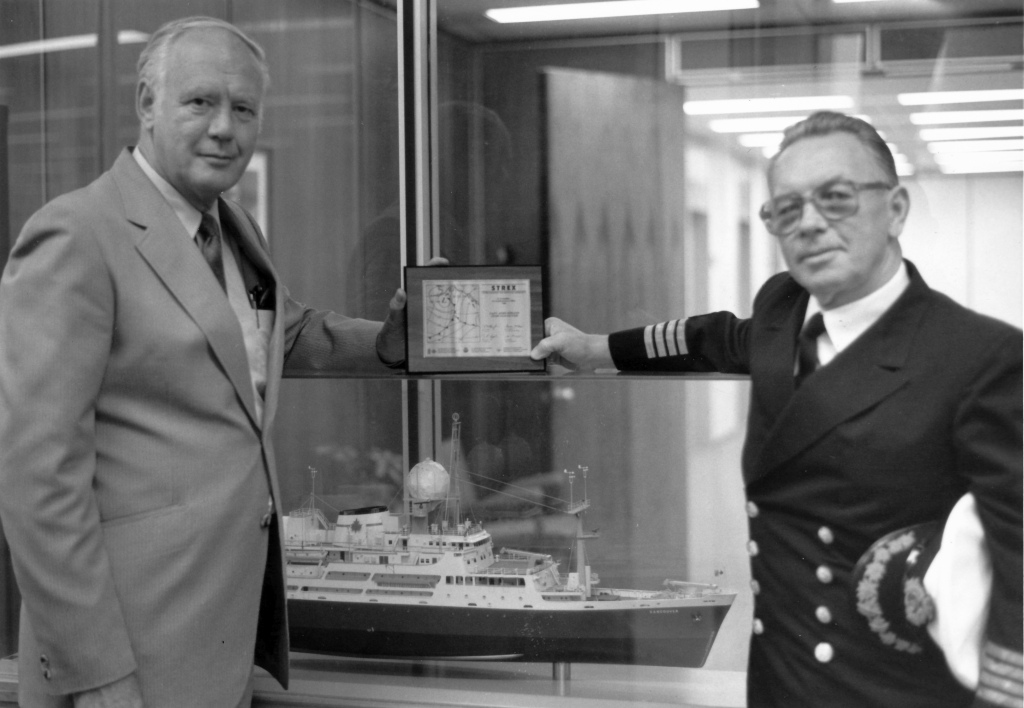*STREX - 1981
* Storm Transfer and Response Experiment
 In the picture Jack Mathieson (left), director AES Pacific Region, presents the plaque struck by the Executive Committee of STREX to Captain John Strand of the CCGS Vancouver. |
* STREX Explained (from April / May 1980 Zephyr)
Knowledge of how the atmosphere and oceans interact is important for advancing the art of weather and climate forecasting. AES and the US's NOAA will jointly undertake a Storm Transfer and Response Experiment (STREX) to measure such interactions in the northeast Pacific. AES has budgeted $135,000 to equip Ocean Station PAPA with required instrumentation and to operate its part of the experiment. The United States will commit two aircraft, a ship, and several buoys. Dr. Gord McBean, chief of the BoundaryLayer Research Division, is coordinating Canadian efforts. photo and text below originally published in November / December 1981 edition of Zephyr As a result of taking part in a major international experiment in the northeast Pacific 18 months ago, the Canadian Weathership CCGS Vancouver has had a special plaque struck in its honor. The experiment, known as STREX (Storm Transfer and Response Experiment) sought to obtain a better understanding of the physical processes of the boundary layers of the atmosphere and ocean in mid-latitude storms. Special observational programs were conducted from ships, aircraft and buoys over a two month period. The major shipboard programs were carried out on CCGS Vancouver by NOAA's Oceanographer, and on the Institute of Ocean Science Vessel Parizeau. |